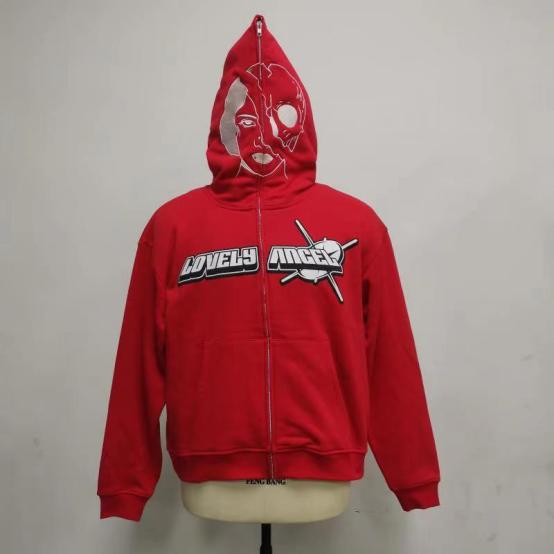Streetwear has become a dominant fashion trend in recent years, appealing to a diverse audience with its unique blend of comfort, style, and cultural significance. However, one of the persistent challenges in this market is the issue of size discrepancies. This article explores the various factors contributing to inaccuracies in size measurements within the streetwear industry, which can lead to consumer dissatisfaction and increased returns.
1. Lack of Industry Standardization
One of the most significant contributors to size discrepancies in streetwear is the absence of a universal sizing standard. Different brands often have their own sizing charts, leading to inconsistencies in how sizes are defined. For instance, a medium in one brand might equate to a large in another. This lack of standardization can confuse consumers, who may not know what size to choose when shopping across different labels.
Impact of Non-Standardization
●Consumer Confusion: Shoppers frequently experience uncertainty about their size, resulting in hesitation when making purchases.
●Increased Returns: When items do not fit as expected, consumers are more likely to return them, which can create logistical challenges for retailers.
2. Variability in Fabric Types
Streetwear often utilizes a variety of fabrics, each with unique properties that can affect how clothing fits. For example, materials like cotton and polyester behave differently when washed, leading to potential changes in size. Fabrics may stretch, shrink, or lose their shape over time, complicating size expectations for consumers.
Impact of Fabric Properties
●Inconsistent Fit: A garment may fit well upon purchase but may change after washing, leading to customer dissatisfaction.
●Consumer Variability: The same piece of clothing may fit differently depending on the wearer’s body shape and how the fabric interacts with it.
3. Influence of Street Culture
Streetwear is deeply rooted in urban culture, and its sizing is often influenced by trends and styles that prioritize comfort and oversized fits. This cultural emphasis can lead brands to adopt more relaxed sizing, which may not translate well across different body types. As a result, what is marketed as a "large" may fit more like an "extra-large" due to the intended style.


Impact of Cultural Influences
●Overly Loose Fits: Consumers may struggle to find well-fitting items if they are accustomed to oversized styles that do not provide a tailored fit.
●Diverse Consumer Expectations: Different cultural backgrounds may influence consumer preferences for fit and style, making standardization even more challenging.
4. Manufacturing Processes and Quality Control
Manufacturing practices play a crucial role in the accuracy of size measurements. Inconsistencies in production techniques, cutting methods, and quality control can all contribute to discrepancies. If a factory does not adhere to precise measurements during the cutting process, the final product may not match the intended size specifications.
Impact of Production Variability
●Quality Control Issues: If a brand lacks rigorous quality control, size discrepancies can go unnoticed, leading to customer dissatisfaction.
●Increased Costs: Addressing production errors and managing returns can significantly impact a brand's operational costs.
5. Feedback Loops and Consumer Expectations
Many streetwear brands rely on consumer feedback to adjust their sizing, but this process can be slow and inconsistent. Brands may collect feedback after a product release, meaning sizing issues may not be addressed until many consumers have already experienced them. Additionally, not all feedback is acted upon, which can perpetuate sizing problems
Impact of Feedback Processes
●Delayed Adjustments: If brands take too long to implement changes based on feedback, they risk losing customers to competitors who offer better-fitting options.
●Ongoing Returns: Continued size discrepancies can lead to higher return rates, negatively affecting both the retailer's and consumer's experiences.
6. The Role of Influencers and Marketing
In the streetwear industry, influencers and marketing campaigns often play a significant role in shaping consumer expectations. Many brands showcase their products on influencers who may wear sizes that do not reflect the average consumer's fit. This can create a misleading perception of how a garment will fit, leading to disappointment when the item is received.
Impact of Marketing Practices
●Misleading Fit Representations: When marketing materials do not accurately represent how clothing fits on average body types, consumers may be left feeling misled.
●Increased Returns: Discrepancies between marketing and reality can lead to increased returns, further complicating the size issue.
Conclusion
Size discrepancies in the streetwear industry are a complex issue stemming from various factors, including lack of standardization, fabric variability, cultural influences, manufacturing practices, feedback loops, and marketing strategies. Addressing these challenges is essential for improving customer satisfaction and reducing return rates.
Brands that prioritize transparency in sizing, invest in quality control, and actively listen to their customers are more likely to succeed in an increasingly competitive market. As the streetwear landscape continues to evolve, a move toward more standardized, inclusive sizing practices may help create a more positive shopping experience for all consumers.
Post time: Oct-28-2024




